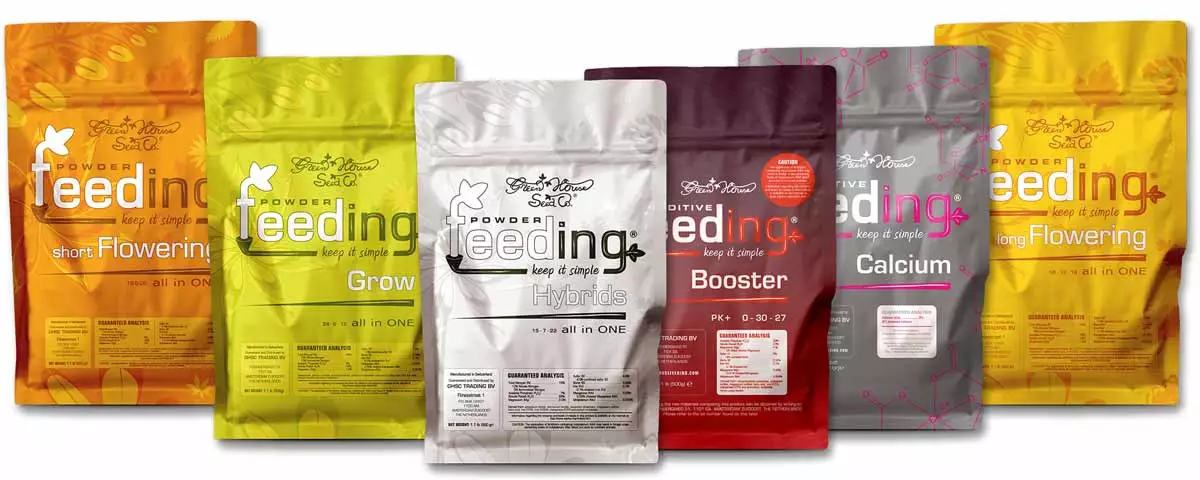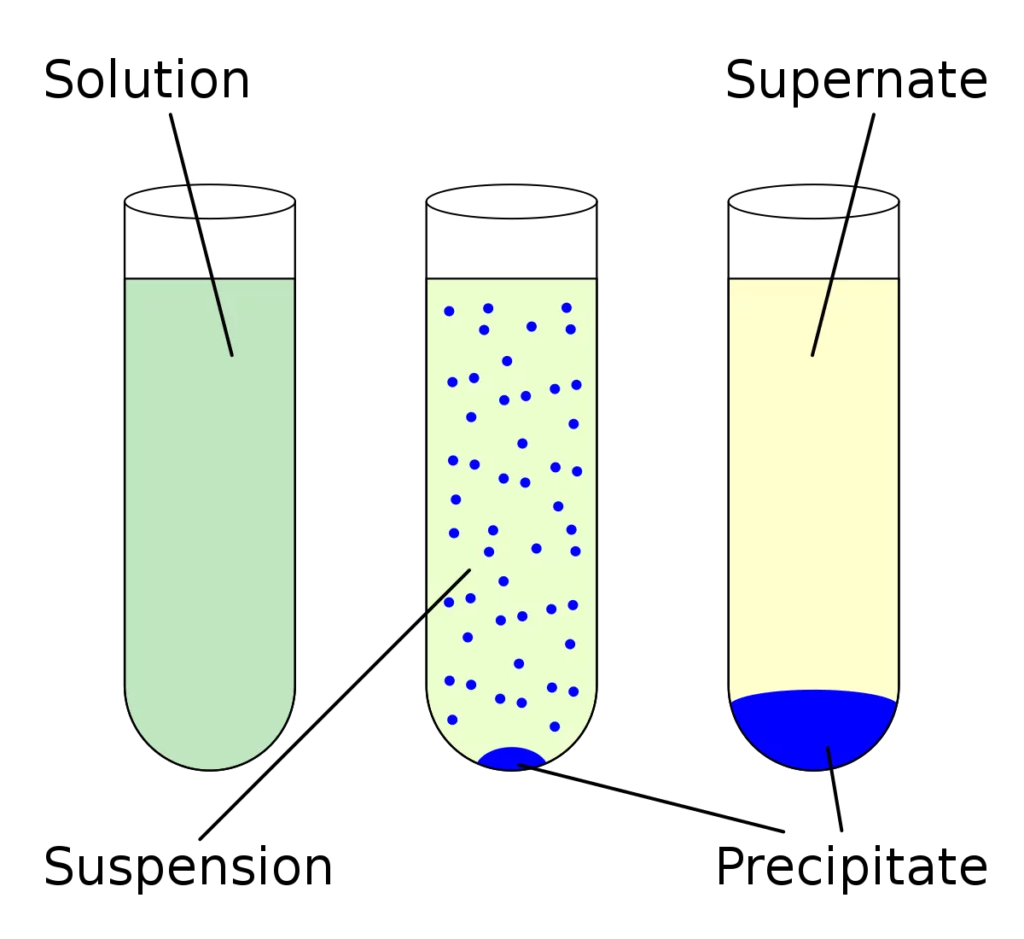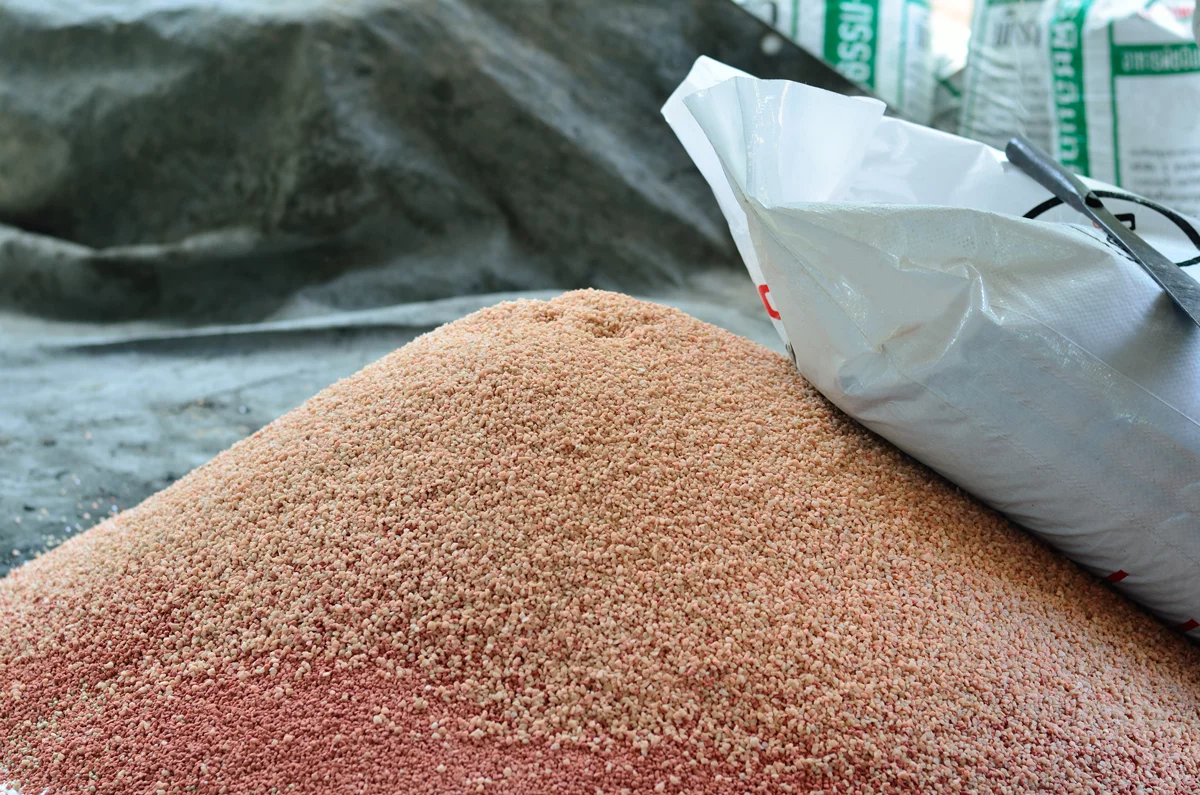So you’re looking for the best dry hydroponic nutrients? We understand that choosing a nutrient product can be overwhelming due to the plethora of options available in today’s market.
Liquid or powder?
A pre-mixed blend or individual nutrients?
No matter what nutrients you’re looking at, your goal is to grow vigorous plants that give you high yields. But what nutrients will help you meet this goal?
To help you find the best nutrients, we’ll dive into the differences between liquid and hydroponic nutrients as well as the factors that determine the quality of nutrient products. Then, we’ll introduce you to a line of products that can help you make a nutrient solution that will boost your plants to another level.
Even if you think you’re committed to liquid nutrients, we encourage you to give this a read. By the time you’re done, you might find that you’ve changed your mind about your commitment to liquid nutrients.

Green House Feeding Mineral Line
Super concentrated mineral fertilizers made in Holland. These nutrients dissolve better than any other dry fertilizer on the market because they use the highest quality ingredients.
And that means more nutrients are available for your plant to absorb.
You can use the easy to use nutrient calculator to make a custom feeding schedule using Green House Feeding nutrients.
Hydroponic Nutrients: Dry vs. Liquid
When it’s time to select nutrients for your hydroponic system, you have two main options: dry/powder nutrients and liquid nutrients. The obvious difference between these two types is their physical composition, but there are other less apparent distinctions as well.
To help you figure out which type is a good hydroponic nutrient for you and your grow operation, consider how the two differ in the following categories.
Concentration
Solid nutrients are much more concentrated than liquid nutrients. After all, the major component of liquid nutrients is water. While one pound of liquid nutrients might only last one week, one pound of powder could last multiple months.
This higher concentration leads to lower shipping costs and decreased storage space.
Shelf Life
Dry nutrients can be stored longer than liquid fertilizers. That means you can buy in bulk without worrying about nutrients going bad. Plus, powders are easier to store due to their increased concentration mentioned above.
Ease of Use
When it comes time to use nutrients, you can probably imagine the difference between dry and liquid products. It’s often easier to weigh out a small amount of powder than it is to measure a small amount of liquid. Furthermore, cleaning up spills of dry nutrients is simpler than liquid spills.
What Factors Determine High-Quality Dry Hydroponic Nutrients?
Now that you know the differences between liquid and powder nutrients, let’s dive into the details about the latter. There are hundreds of dry hydroponic nutrients available on the market, and it can be hard to choose which one is best.
When you’re choosing a dry hydroponic nutrient, you want to look at several items including solubility, purity, stability, and nutrient blend. By examining these factors, you can choose a product that helps your plants grow big and produce big blooms.
Solubility
Many products tout their solubility rates, but this doesn’t matter if you don’t understand what it means. What exactly is solubility?
When you add dry nutrients to water, you want the entire product to dissolve and form a homogenous solution. The ability of a product to dissolve in water is known as its solubility. If a nutrient is 90% soluble, that means that 90% of the product dissolves in water.

Why does this matter? Undissolved particles aren’t able to enter into a plant. That means that the insoluble fraction of the product is waste. Along with this, these solid particles can clog equipment such as drip emitters and pumps.
If you haven’t figured it out yet, high nutrient solubility is a must in hydroponic systems.
Two main factors influence nutrient solubility: the pH and the form of the nutrient. You may have to alter your solution’s pH to obtain the correct pH for optimum solubility and nutrient availability. Don’t worry, this is fairly simple to do. But once you buy a nutrient product, you’re stuck with it. That means it is essential that you choose a product wisely.
Purity
Just because a product contains nitrogen, phosphorus, and potassium, that doesn’t mean that’s all it contains! Some products include fillers and impurities, both of which you want to avoid.
When you’re looking at nutrients, you want a low level of heavy metals and no plant growth regulators (PGRs) nor pesticides. While avoiding these substances may sound obvious, plenty of hydroponic nutrients contain them.
Why should you forgo products that contain these, you ask? Let us break it down for you.
Plant growth regulators, whether natural plant hormones or synthetic compounds, impact plant growth and development. Some stimulate apical dominance and others increase root growth or slow respiration. While these substances can be helpful when you use them intentionally, they’re not something you want to add to your plants when you’re not intending to do so.
If you’re applying nutrients that contain PGRs, you don’t know what unintentional effects these products are having on your plants. Due to the adverse consequences these PGRs can cause, it’s smart to look for nutrient products that are free of these growth regulators.
Heavy metals such as cadmium, copper, lead, and mercury can also negatively impact plant growth. These metals can alter crucial plant processes, slow plant metabolism, and reduce yield. While plants do need trace amounts of some heavy metals, including zinc and copper, high levels of these elements can quickly harm plants.
Herbicides may also be present in nutrients, even if you don’t want them there. If these herbicides make it into solution, your plants can experience adverse effects on their growth.
pH and EC Stability
When you’re monitoring a hydroponic nutrient solution, there are two main measurements you want to check: the pH and the electronic conductivity (EC). The pH is a measure of how acidic/alkaline a solution is, and the EC essentially measures the amount of salts in a solution.
The pH affects what nutrients are available in a solution. While some nutrients are most available at a lower pH and some are most available at a higher pH, a range of 5.4 – 6.0 is a good range for growing in soilless media. When you add nutrients to water, they will either raise or lower the pH.
Along with examining how the nutrients will affect pH, another factor to consider is how stable the nutrient solution will remain over time. Some products will form a solution that exhibits a change in pH over time while other products will form a more pH stable solution.
The electronic conductivity is just like what it sounds — a measure of a substance’s ability to conduct electricity. While you probably aren’t too concerned about this when growing plants, this measurement also provides information about nutrients.
When nutrients are added to a solution, they break into positively and negatively charged ions, aka cations and anions. These oppositely charged ions then act as conductors of electricity. This means that a higher EC is correlated with a higher amount of salts. If the EC is too high, plants are susceptible to ion toxicity and osmotic stress (when water is quickly drawn out of plant cells), and too low of an EC can result in nutrient deficiencies.
While all mineral nutrients will raise the EC of a solution, some nutrient products create a solution with a stable EC and others create a solution with a highly fluctuating EC. A stable EC is preferable since you can keep it in the optimum range without making frequent adjustments.
Products to Meet Plants’ Needs
As you probably know, plants require different amounts of nutrients as they complete various stages of growth. When they’re putting on vegetative tissue, they need large amounts of nitrogen. But when they switch over to flowering, nitrogen needs drop as potassium and micronutrient needs increase.
To give your plants exactly what they need when they need it, it’s helpful to have different nutrient products you can turn to. If a brand only offers one blend of nutrients for a plant’s entire life, nutrients will be oversupplied during some stages of growth and undersupplied during others.
The Best Dry Nutrients for Hydroponics
After reading above, you know that high-quality solid hydroponic nutrients have a high solubility as well as a varied line of nutrient products. High purity is also important for producing quality plants.
The dry hydroponic nutrients from Green House Feeding meet all of these criteria for high-quality nutrients. Each nutrient product in the Green House Feeding line contains no PGRs or impurities such as herbicides. Plus, they contain the lowest possible level of heavy metals. And they don’t contain urea, chlorine, or fluorine.
One of the best parts about these products? They have 100% solubility. That’s right, 100%. That means that all of the nutrients you buy become available for plant uptake.
As an example, let’s take a look at the Green House Feeding Grow product. The maximum solubility is 1.3lb/gal and the recommended rate for a stock solution is 4oz/gal. That means that the product is way under its maximum solubility rate and no product will precipitate out of solution.
Another great thing about the Green House Feeding line of dry nutrients is their stability. When they are added to water, the resulting solution retains its pH and EC for at least a week. Highly concentrated solutions remain stable for even longer periods of time. That means that you can mix up a stock solution and add it to your hydroponics system over the period of a month.
Where do these high-quality nutrients come from? The main ingredients are sourced from Germany and Switzerland, where quality standards are very high.
Comparing General Hydroponics Dry Nutrients
While you may think that Green House Feeding products sound good, what’s to say they’re better than other dry hydroponic nutrients? To answer, let’s take a look at some other popular products.
Hydroponic Research produces a diverse array of powdered nutrients under the Veg and Bloom product name. These products don’t contain precise information about their purity or solubility, so it’s difficult to tell what you’re really getting when you buy these products. One thing we can say is that Veg and Bloom produces less consistent results under varying water hardness levels as compared to GHF products.
When comparing Green House Feeding to products from dry nutrients from General Hydroponics, you’ll notice that GHF nutrients don’t separate out in solution. When calcium and other elements separate out, nutrients don’t play well with Dosatron and similar pump systems.
Another benefit? Green House Feeding products are compliant with current and potential future fertilizer legislation. You won’t start using this product, only to see its recipe be forced to change after new input legislation is passed. And this compliance indicates the high quality of these nutrients. There’s no need to worry about harmful levels of selenium, lead, arsenic. mercury.
One more benefit? The cost! There’s no need to combine liquids and powders. Using Green House Feeding dry nutrients alone allows you yo keep your fertilzer costs less tahn 10% of total crop cost.
Organic Dry Fertilizer for Hydroponics
The products in the Bio Line of Green House Feeding are made from organic nutrients and natural minerals. Together, these materials supply your plants with necessary macro and micronutrients.
Along with nutrients, these products provide a boost of beneficial microbes that help plants take up nutrients.
Since plants have various nutrient requirements at different stages of growth, this line contains three unique products. All three products contain organic nutrients, and the BioGrow and BioEnhancer products are OMRI certified.
BioGrow supplies a large dose of slow-release nitrogen to boost vegetative growth. Potassium, phosphorus, and a swath of micronutrients support the plant as it grows.
BioBloom is tailored for the flowering and fruiting stages of plant growth with a lower amount of nitrogen and increased potassium and phosphorus.
Enhancer does just what its name says! While it does supply some nutrients, its real power comes from the various biostimulants it supplies, including seaweed extract, humic acid, and Trichoderma harzianum. These products work to enhance nutrient uptake and increase a plant’s overall vigor.
Give Powdered Nutrients a Try
If you were on the fence about using dry hydroponic nutrients, hopefully, you’re now ready to give them a try. They are easier to store than liquid nutrients and typically cost less. But remember not all dry hydroponic nutrients are created equally!
When you’re choosing a powder nutrient product, look at factors including the solubility, purity, and stability. If a product doesn’t list information about these factors, you can always contact the company to obtain more information. But if you don’t hear back, they might be trying to hide something.
If you’re searching for a company that is transparent about the makeup and quality of its products, check out Green House Feeding. When you buy their powdered nutrients, you can be sure you’re receiving a high-quality product that will give your plants the nutrition they need.
Resources
The Difference Between Nutrient Solubility and Mobility
Electronic Conductivity and pH Guide for Hydroponics.
How Hormones and Growth Regulators Affect Your Plants
